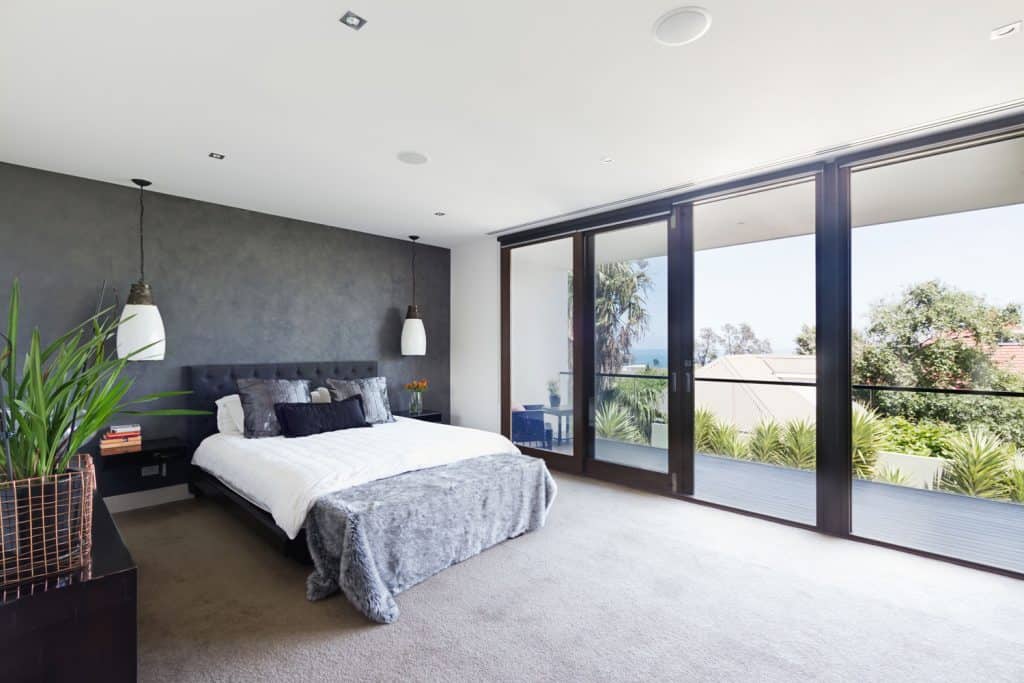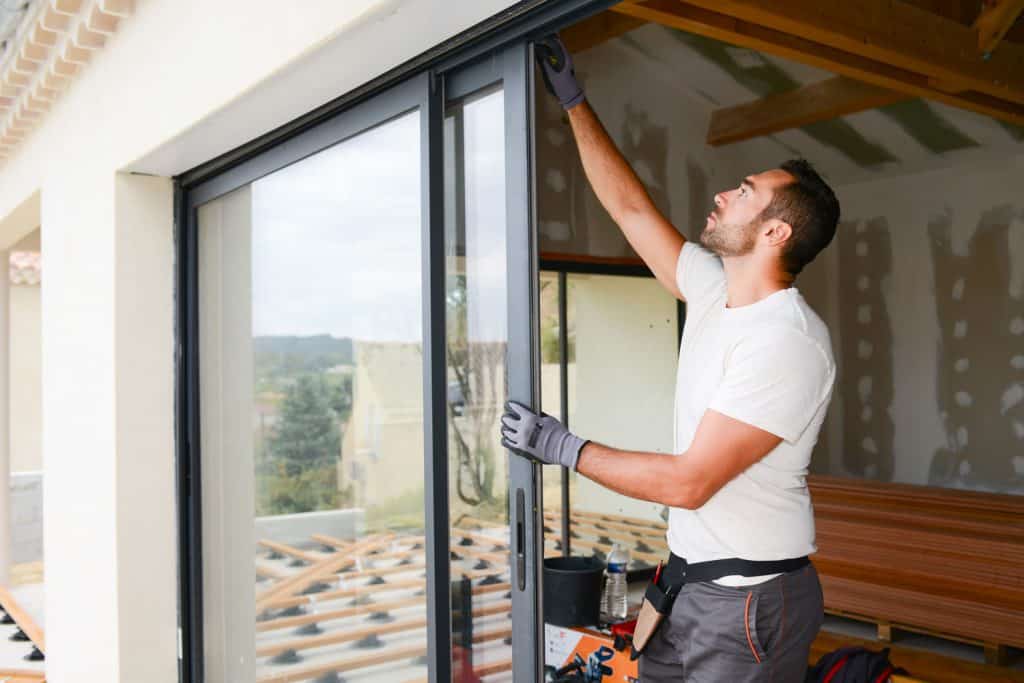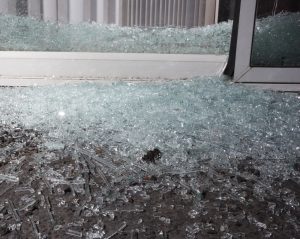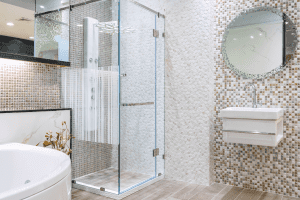Wi-Fi has become an essential part of life. Even with advanced technology, however, there are times that you cannot avoid slow and interrupted Wi-Fi signals. There are physical factors that affect Wi-Fi speed and connectivity. One could be the type of door you have at home or office, as certain door materials block Wi-Fi signals. We have researched from the experts to find out if glass doors block Wi-Fi.
Glass doors can block Wi-Fi signals. Tinted, double-glazed, and low-emissivity glass are the common types of glass that block Wi-Fi signals. Aside from these glass types, mirrors and windows on the doors block Wi-Fi signals. These materials reflect the Wi-Fi signals, which results to slow internet connections. Also, the position of your router near a glass door affects the speed of the Wi-Fi.
Even though your doors are not glass, the framing and materials of the door affect the Wi-Fi signals. It is unnecessary to buy a new door to strengthen the Wi-Fi signals in your house or workplace. If you want to get a quick fix, there are simple and technical solutions you can do to solve your Wi-Fi problems. Keep reading to know more about doors and Wi-Fi signals.

Why Do Some Glass Doors Block Wi-Fi?
Glass doors can either reflect or absorb Wi-Fi signals. As a result, the signals weaken as it passes through the glass. Tinted glasses, double-glazed, and low emissivity or "Low E" glasses are some types of glass to avoid. Below are the reasons why these types of glass block Wi-Fi signals.
Tinted Glass
Instead of clear glass, homeowners choose tinted glass to obscure the sight of people. Tinted glass absorbs the heat and light rays that pass through the door. For these purposes, tinted glasses are thick due to their colored layer. Tinted glasses have a layer of metal oxides and other metal additives. With the metal components, the Wi-Fi signals weaken.
Double-Glazed Glass
Double-glazed glass is also typical for privacy purposes. There are tiny bumps that break down transmissions like light rays. The bumps also give a hazy view from the outside. This texture adds to the aesthetics of the doors but is a major Wi-Fi signal barrier.
Low Emissivity Glass
Low emissivity or "Low E" glass is an eco-friendly innovation in modern construction. You can find low emissivity glasses that follow the LEED building framework. Although eco-friendly, low E glass reduces the speed of cellphone signals passing through.
Low E glass can be hard- or soft-coated. Hard coatings have a thin layer of sprayed metal coating like tin. While for the soft coatings it has a silver lining in the middle of two glass panes. Regardless of the coating and cost-efficiency, this innovative type of glass is a Wi-Fi signal blocker.
The wrong glass type for your doors affects your Wi-Fi connectivity. Check out some glass door recommendations below.
Glass Door Recommendations
Try choosing a glass that has not undergone treatments or has no trace of metal components. An untreated or untinted glass will have fewer problems with Wi-Fi signals. You can choose annealed or clear tempered glass for low Wi-Fi signal blockage.
Check out this DIYHD clear glass door panel on Amazon.
Get this LTL Home Products traditional french bi-fold glass door on Amazon.
If the Wi-Fi connection is still slow, the cause might be the door itself. Keep reading to learn how doors block Wi-Fi signals.
Do Doors Block a Wi-Fi Signal?

Whatever type of door you have, there is an extent of the attenuation of Wi-Fi signals. Attenuation levels vary due to different door materials. Decibels per milliwatt (dBm) is the unit of measurement for attenuation levels. When looking at attenuation levels, the dBm is in the negatives. That is to say, a -80 dBm signal is usually for basic connectivity, while a -30 dBm has a higher signal (which is rare in the real-world setting).
Attenuation levels differ between Wi-Fi frequency. Wi-Fi frequencies available are 2.4GHz or 5GHz. Regardless of the material blocking it, the transmission loss increases when the Wi-Fi frequency increases. There will also be differences in attenuation rates across material families. You can check out more about the attenuation levels for 2.4 GHz and 5 GHz frequencies from the 3Com product guide.
If you found out that your door blocks the Wi-Fi, there is a simple solution. You can try opening the door for a quick fix. Continue reading to find out how opening the door can help you with your Wi-Fi concerns.
Opening Of The Door
One thing to consider is how the door physically blocks the Wi-Fi signals. Opening the door can help you get a better Wi-Fi signal, but the improvements are only minimal. You can observe a significant change when the door is thick or made of materials that are natural Wi-Fi signal blockers. Try opening your door and see if there are improvements.
What Materials Can Block a Wi-Fi Signal?

Aside from glass, other materials block your Wi-Fi signals. Shy away from these materials to get a stable Wi-Fi connection.
Here are the top 10 materials that can block your Wi-Fi signal:
- Metal - This is the top Wi-Fi signal blocker. Metals absorb electromagnetic radio waves and conduct electricity well.
- Concrete - Gives the worst signal loss. The thicker the concrete, the harder for the Wi-Fi signals to pass through.
- Plaster - Old structures have plaster walls with metal lath. With some metal, this can cause frequently interrupted Wi-Fi signals.
- Ceramic Tiles - These are dense and very hard. You may not get signals in the kitchen, bathroom or, other parts of the house with ceramic tiles.
- Mirrors - Mirrors reflect the light or any transmissions. There is a thin coat of metal behind the reflective glass, which causes the interference.
- Windows - These also interrupt Wi-Fi by reflecting the signals. There might be metallic films in the window's composition, which deters the constant flow of Wi-Fi signals.
- Drywall - The loss in decibels is low, but this can still interfere with Wi-Fi signals. It covers the walls of most houses, which adds another layer for Wi-Fi signals to hurdle.
- Water - Water conducts electricity, thus absorbing the Wi-Fi signals. Wi-Fi signals travel at a slower rate due to the reflection and refraction of water.
- Appliances - There are metal and electrical components of appliances that interfere with Wi-Fi signals.
- Furniture - The physical location of furniture and fixtures blocks Wi-Fi routers.
How Can I Get a Better Wi-Fi Signal On The Other Side Of My House?
There are simple and non-technical ways to get better Wi-Fi signals. You can check if there are objects that block the router. If possible, mount the router in a high position. For the Wi-Fi signals to reach all corners of the house, you can position the router in the center of your home.
In addition, you can buy a Wi-Fi repeater or a better router with a mesh network. Purchasing a Wi-Fi repeater is good, but the connections lose speed and stability after some time. For routers, the trend nowadays is going for mesh networking. Mesh router networks eliminate the dead zones in your house or building. You can always research the brands and the products to strengthen the Wi-Fi.
Get this Linksys tri-band home mesh router on Amazon.
Check out this Google mesh Wi-Fi system on Amazon.
Buy this TP-Link 3-pack mesh Wi-Fi system on Amazon.
Aside from buying Wi-Fi repeaters or a mesh network router, you can do powerline networking. Powerline networking is a hybrid of a wired and wireless network. If you have existing electrical wirings, these can support long-range connections in your place. You can make use of existing ethernet cables in your homes to do this type of network arrangement.
Get this TP-Link powerline adapter on Amazon.
If you have some expertise with wireless connections, here are some technical solutions to better Wi-Fi signals in the house:
- Change the router channel.
- Kick out Wi-Fi intruders by making your network private and creating stronger passwords.
- Change to a higher band frequency (i.e., from 2.4 GHz to 5 GHz).
- Update your router's firmware regularly.
- Add a third-party firmware that allows more advanced networking features.
Does Wi-Fi Go Through Walls?
Wi-Fi signals are electromagnetic. On different surfaces, Wi-Fi signals can either pass through, be reflected, or get absorbed. Wi-Fi signals pass through walls, but the signal speeds are slow due to the composition of the wall. Thick walls made of reinforced concrete or drywall with metal lath can block Wi-Fi signals.
In Closing
Glass doors can block Wi-Fi signals. Tinted, double-glazed, and low emissivity glass are common glass types that block the signals. Aside from the kind of glass, doors block the Wi-Fi due to the thickness and positioning. Try opening the door or adjusting the placement of the router to see any improvement. If the glass is not the problem, other materials like metal block the Wi-Fi signals. If the issue persists, you can ask for technical help.









